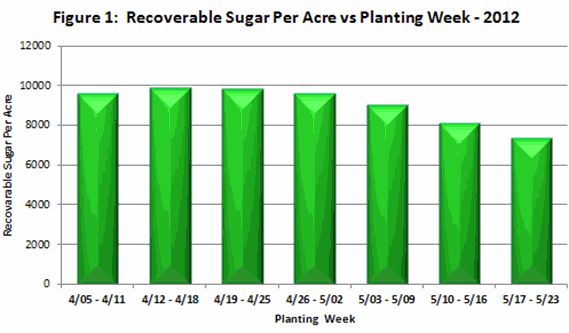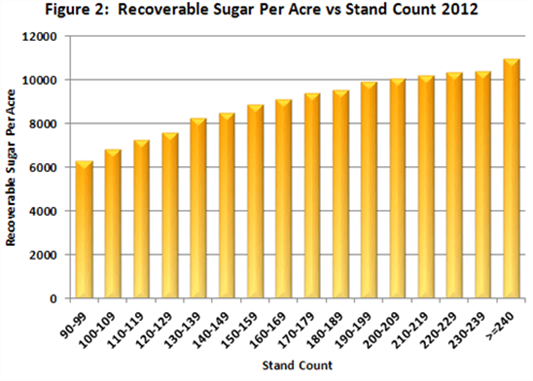574 - Back to Basics: Foundation of Sugarbeet Success
PROGRESS CAN ONLY BE ACHIEVED BY LOOKING AHEAD, TRYING THE NEW PESTICIDE OR ADOPTING A NEW PRACTICE IN YOUR FARMING business. Many of these new opportunities prove successful and of course some have little or no value for improving profitability. Emphasizing the basics is imperative, continuing those long time tried, true, proven practices that lay the foundation every year for a crop with high yield, excellent quality and increased profitability. Success of the 2012 crop was in large part due to maintaining the basics. Attention to the basics allows the crop to take advantage of favorable weather and reduces the negative impact of unfavorable weather.
The "Basics": What Are They?
- Careful variety selection for each field
- Seedbed preparation - maximum fall tillage, minimum spring tillage
- Plant early for profit see figure 1
- Establish high plant populations of evenly spaced beets - see figure two


Other Key Practices That Have Been Widely Accepted and are Part of the Basics:
- Over 50% of acres are zone sampled for variable rate N application
- Use of Rhizoctonia management fungicides on more than 65% of acres
- 72% of planters were evaluated at test stand clinics
- 79% of previous crop acreage was small grain
- Over 80% of all acres had either 2, 3 or 4 fungicide applications for Cercospora
- Use of starter fertilizer on 85% of all acres
- Over 87% of all acres had an at-plant or seed treatment insecticide used
- 99% of all fields were soil tested for fertilizer application
2013 NDSU/UM Grower Program Topics and Speakers:
- 8:30 - 9:00 Sugarbeet Nutrient Management - Dr. David Franzen, NDSU
- 9:00 - 9:30 Sugarbeet Insect Control - Dr. Mark Boetel, NDSU
- 9:30 - 9:45 Refreshments
- 9:45 - 10:35 Managing Diseases of Sugarbeet - Dr. Mohamed Khan, NDSU & University of Minnesota
- 10:35 - 11:30 Sugarbeet Weed Control Strategies - Dr. Jeff Stachler, NDSU and University of Minnesota
Blue Book Data
Is available on-line to show you how each of these production practices were utilized in your agriculturist area or your factory district.
